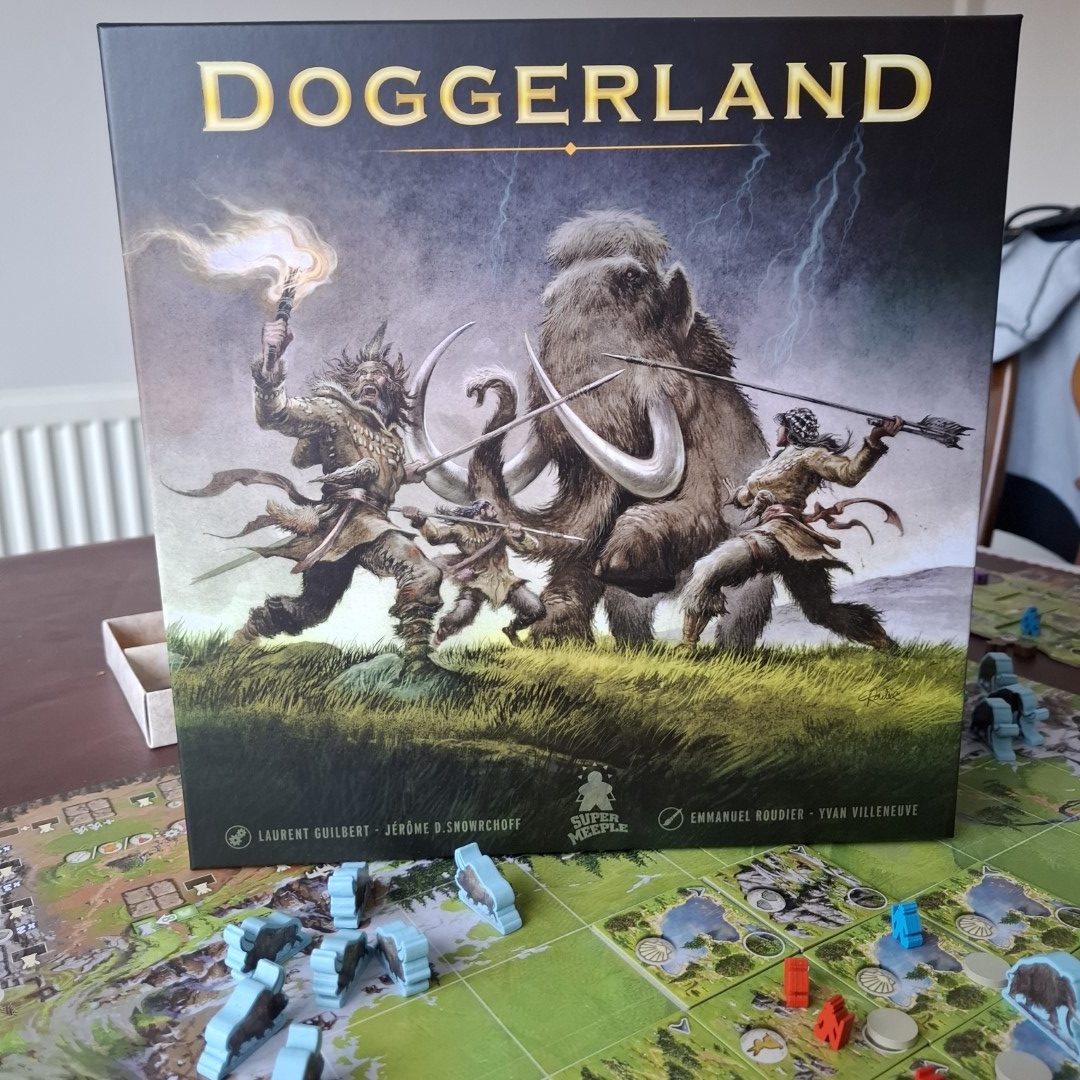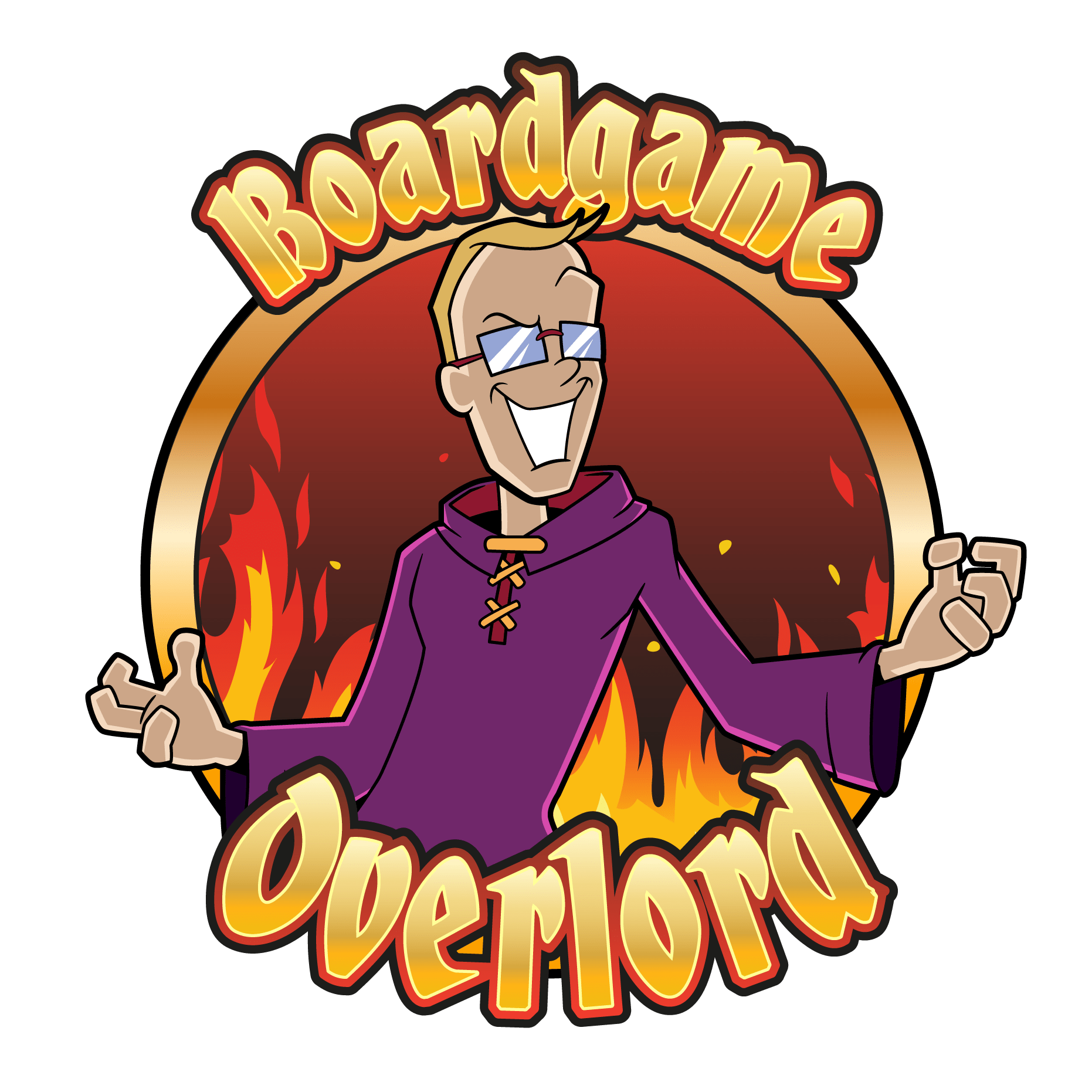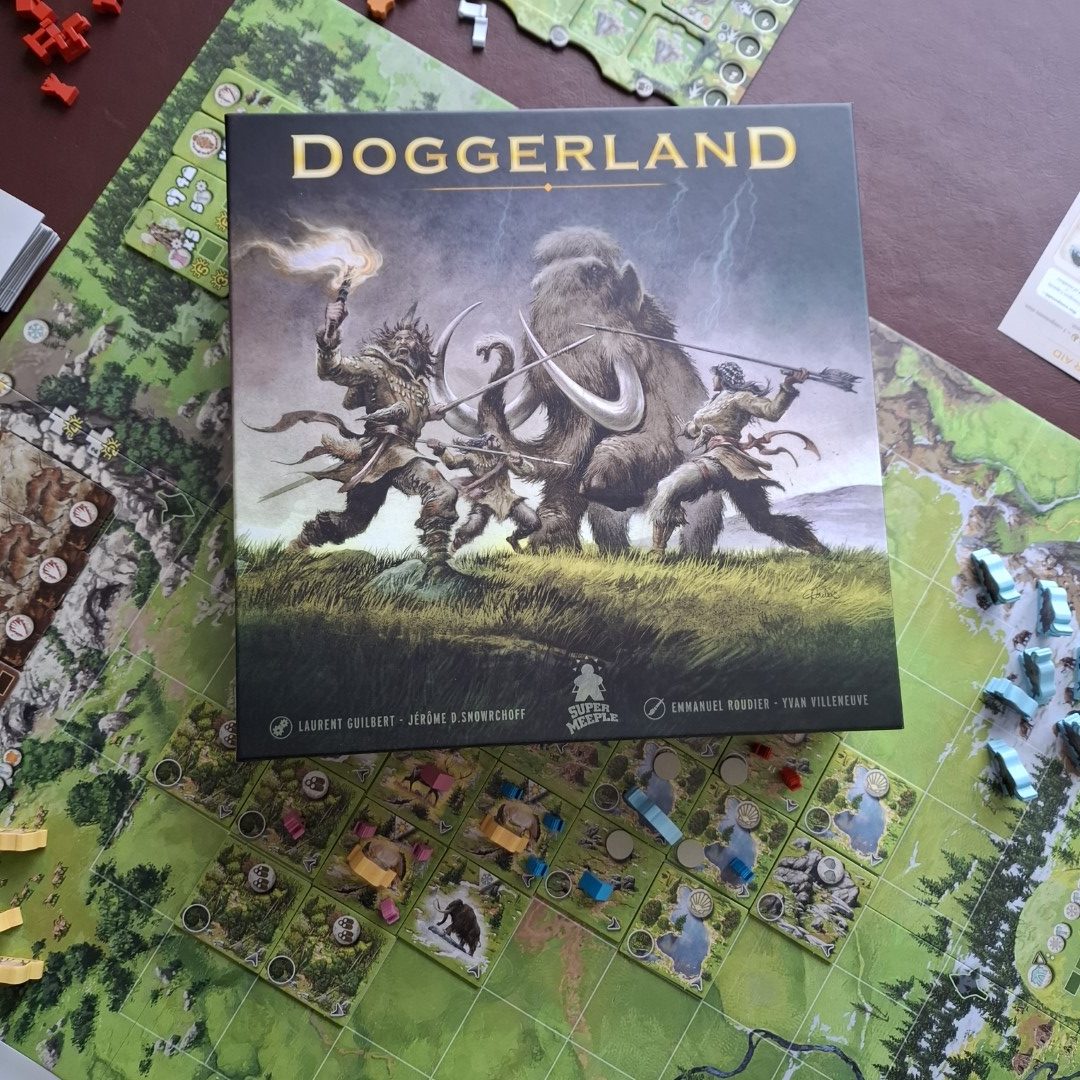Doggerland from SuperMeeple and distributed by Hachette Board Games UK is set 15,000 years ago. In a land known as Doggerland, where you’ll need to harvest resources to build tools to build homes, weapons, and hunt game. Doggerland takes place over 8 rounds, throughout which you’ll be seeking to grow your tribe from it’s humble beginnings.
Doggerland apart from it’s first time joke of a name, soon gets annoying. To the point where I’m a bit bored of the Doggerland jokes, now you might say I have no sense of humour or I’m being petty. To us boardgamers, I get that it’s funny that first time round and allows for the remark and joke. But go tell a non-board gaming friend this weekend. You’re going to play Doggerland. Yeah, that isn’t funny, just awkward. But on that note, let’s explore how to play.
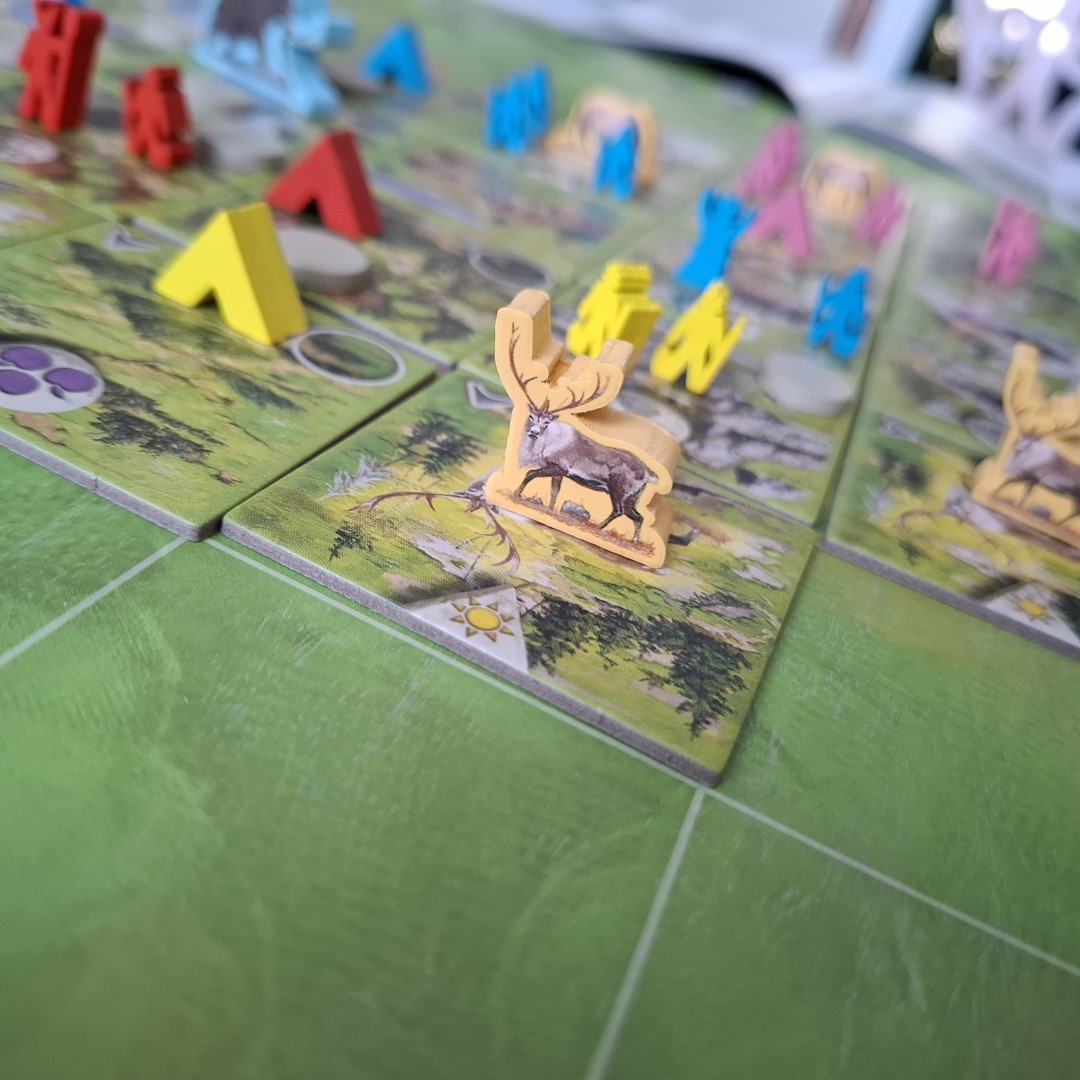
How to play
Doggerland, is a simultaneous action selection worker placement game and to some extent simultaneous action resolution. Throughout the 8 rounds, you’ll play through the seasons , which will impact the frequency of different animals appearing. However, each rounds structure is the same and broken down into 5 phases.
1) program Actions
2) Reveal Terrain Tiles
3) Resolve Actions
4) Animals Migrate
5) End of the round
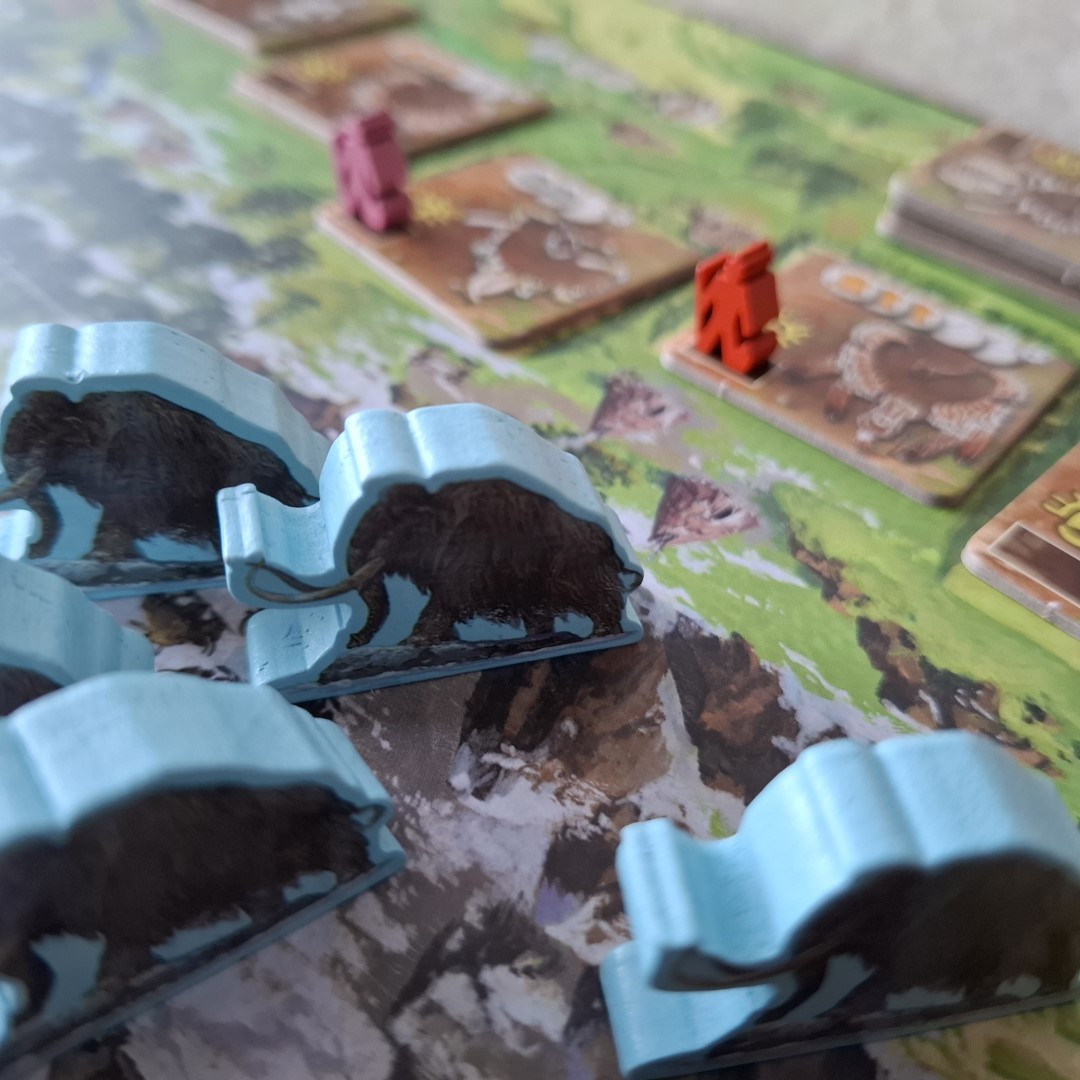
The bulk of the game takes place in the action resolution phase, although we found the programming action step can take longer than expected. During the program action phase, you’ll take it in turns to place a tribe member on the relevant action. These actions are:
Build a habitat
Create a handicraft
Reproduce
Gather resources
Hunt large game
Paint the fresco
Improve your abilities
Use the shaman
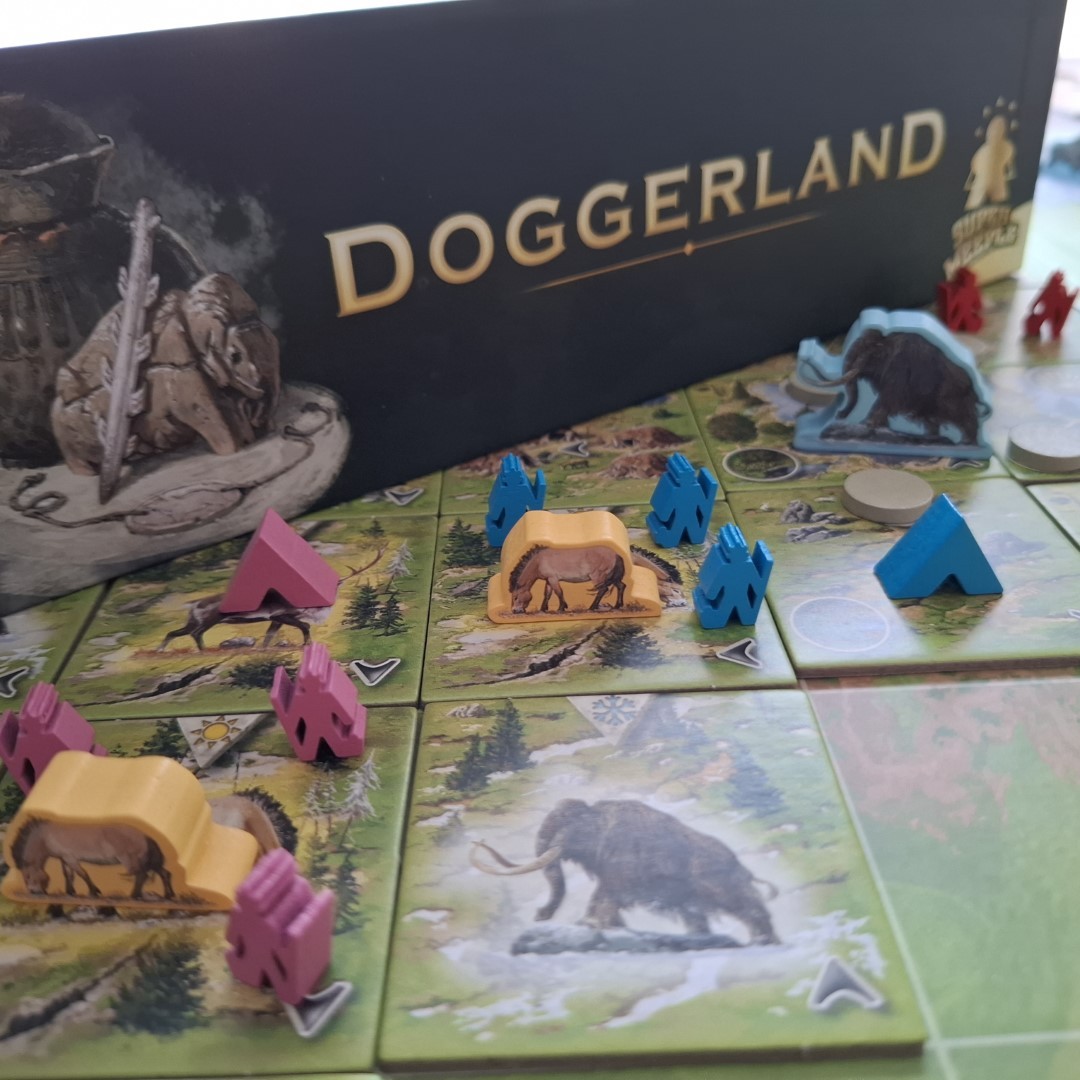
Importantly, the order in which you place tribe members during the programming phase does not dictate the order in which you resolve them. For example, you may program a build habitat action and, at the time of programming, not have enough resources. You’ll only need the resources at the time of resolving.
Although there is a cost to organising an expedition which needs to be paid at the point of planning. These expeditions for resources and small game are limited to three components, while large game have no component limit.
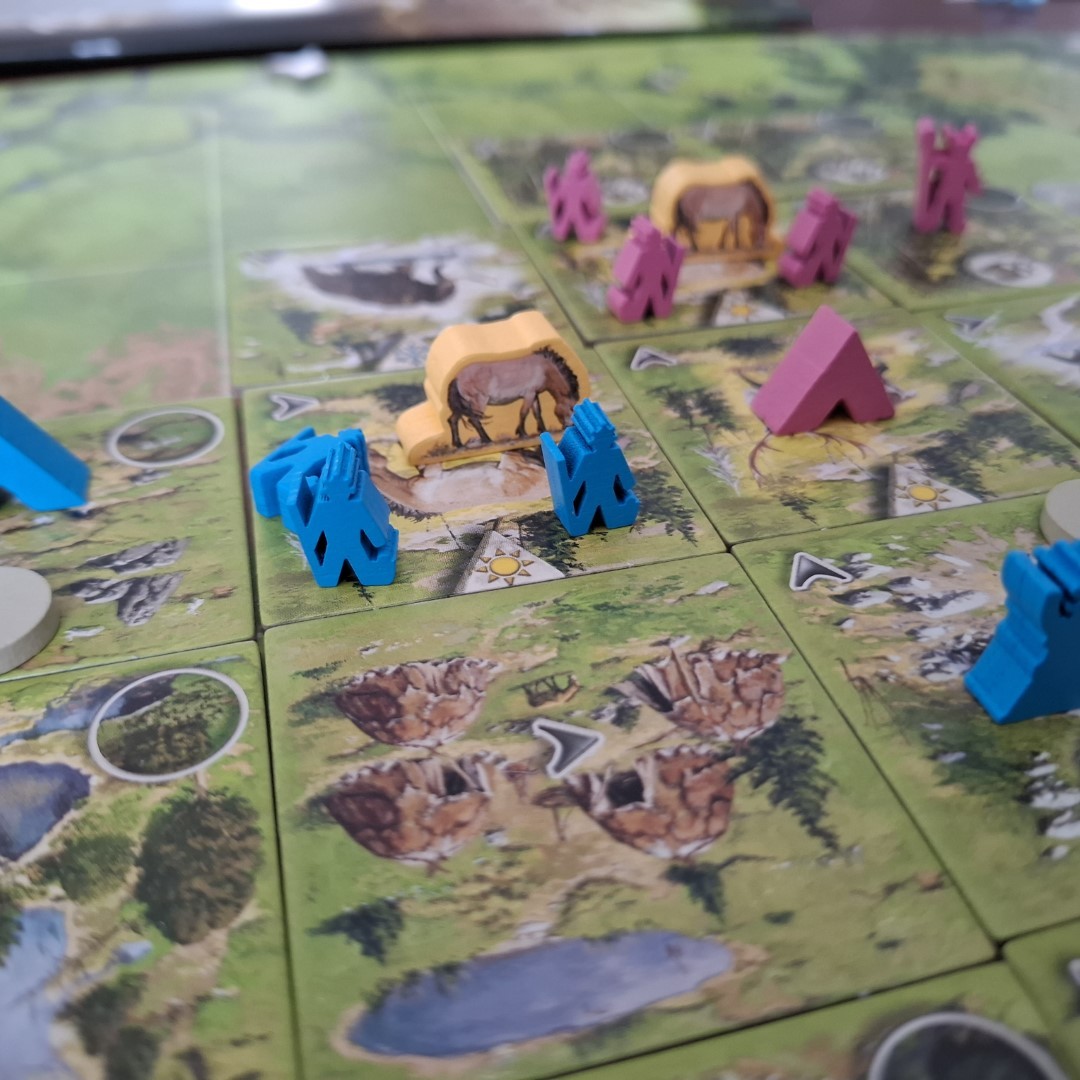
Over the course of the game, the habitat will expand as new terrain tiles are discovered. For each space orthogonally adjacent to a tribe member, you’ll draw and place a new terrain tile. You can fill these spaces in any order.
Then there’s action resolution, before any remaining animals migrate.
That leaves the end of the round for feeding your tribe, meaning you’ll need to ensure you’ve generated enough food to feed your tribe members. Or you’ll find yourself taking scarcity tokens. You’ll then check to see if anyone has scored any of the objectives (4 are revealed at the start of the game) and then add animals before some end of the round upkeep.
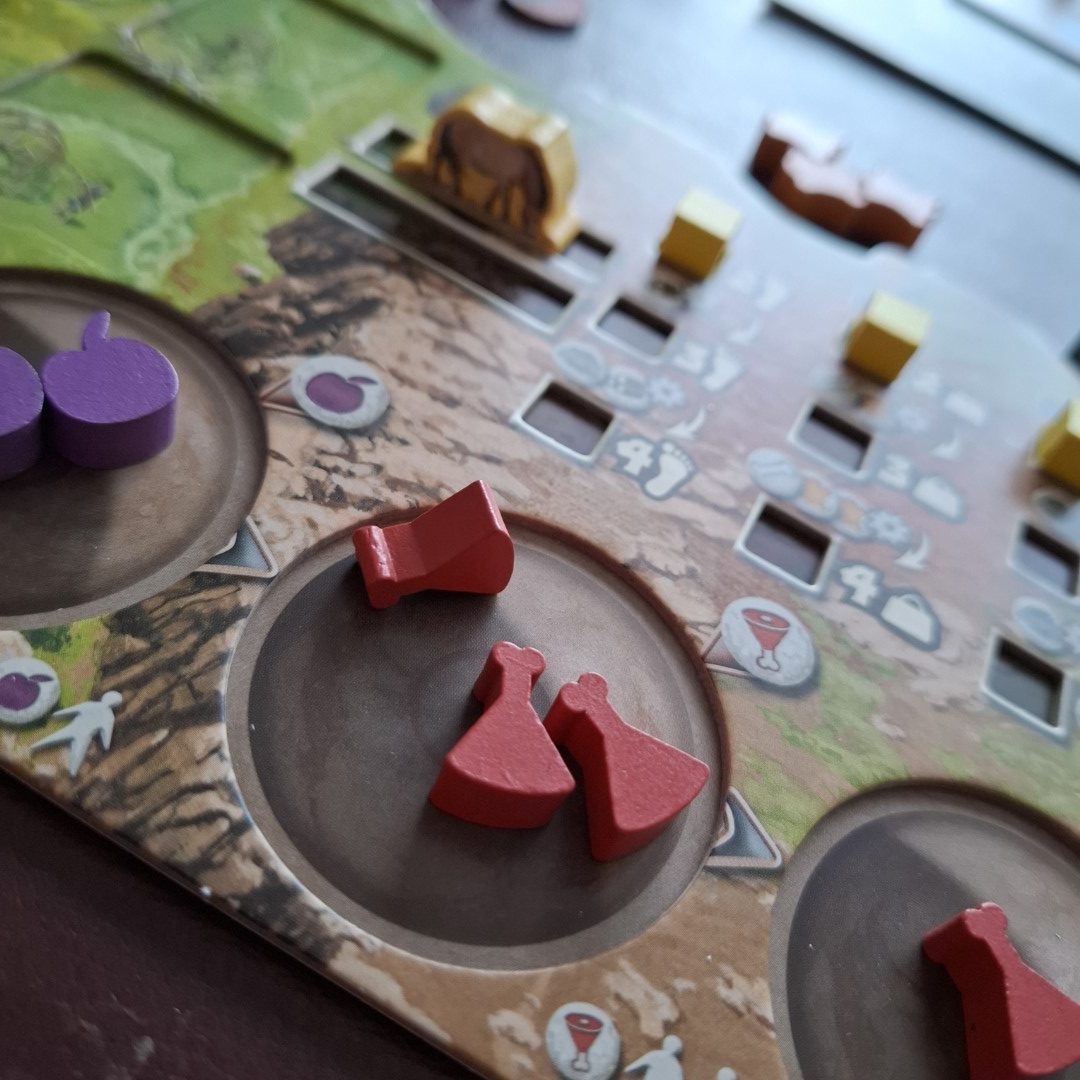
Initial Thoughts
I’ve already talked about the games name so I won’t repeat myself there. Doggerland first seemed off putting with it’s programming and simultaneous actions, having members of painful games of robot rally. However, there’s a thematic tie in here, the hunt action in particular broken down into expeditions and hunting. And then there’s still resources to gather, but who would gather resources while there’s a big mammoth nearby!
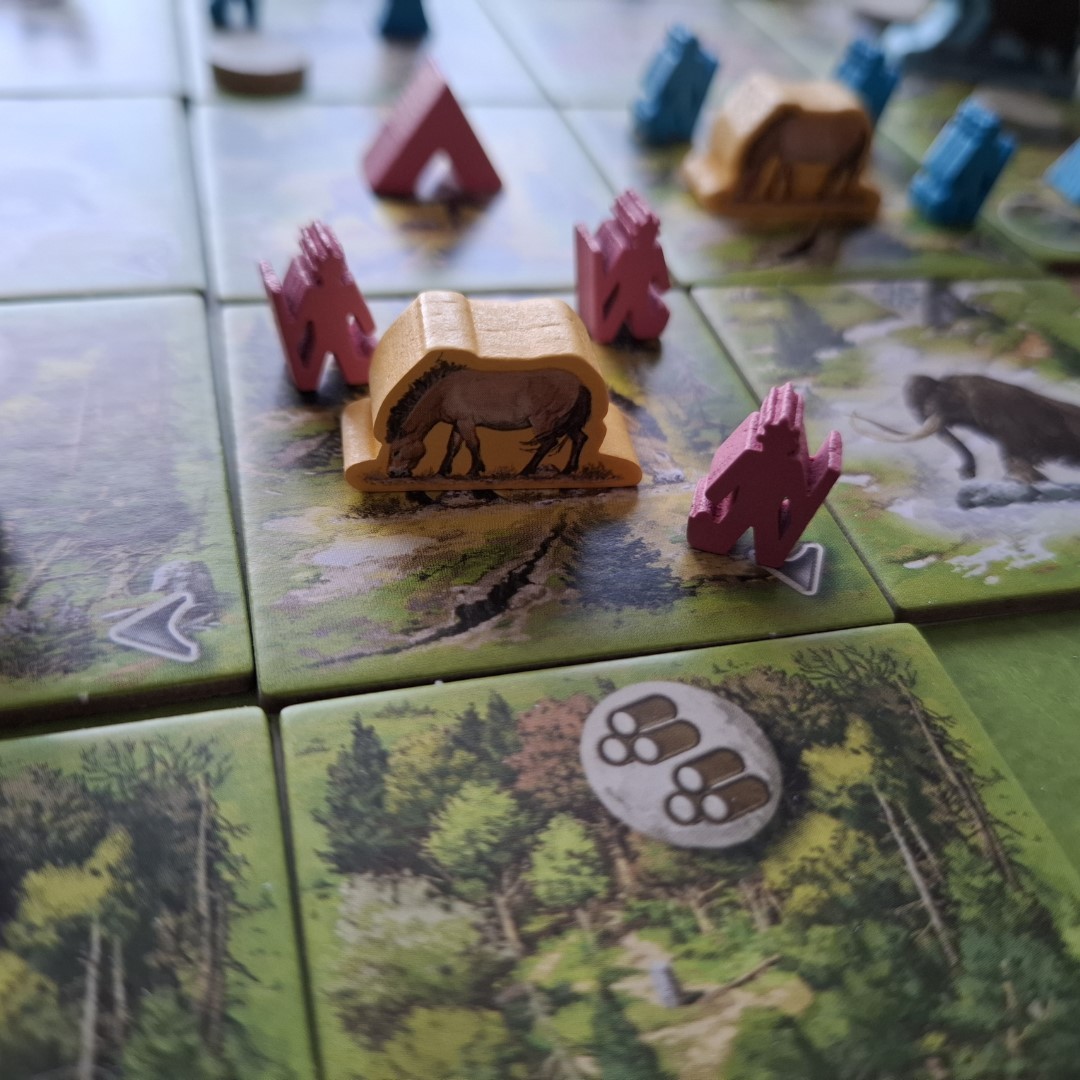
Although I think I caveat my initial praise of the hunting and to some extend gathering (as they are very similar action wise), with it feels a little bit too fiddly. You’ve got to balance three metrics to hunt or gather, power, number of people and transport capacity. Gathering is calculating power, multiplying this by resources on tile, then capped by transport capacity. It feels like one step too many, despite feeling like a game that oozes theme.
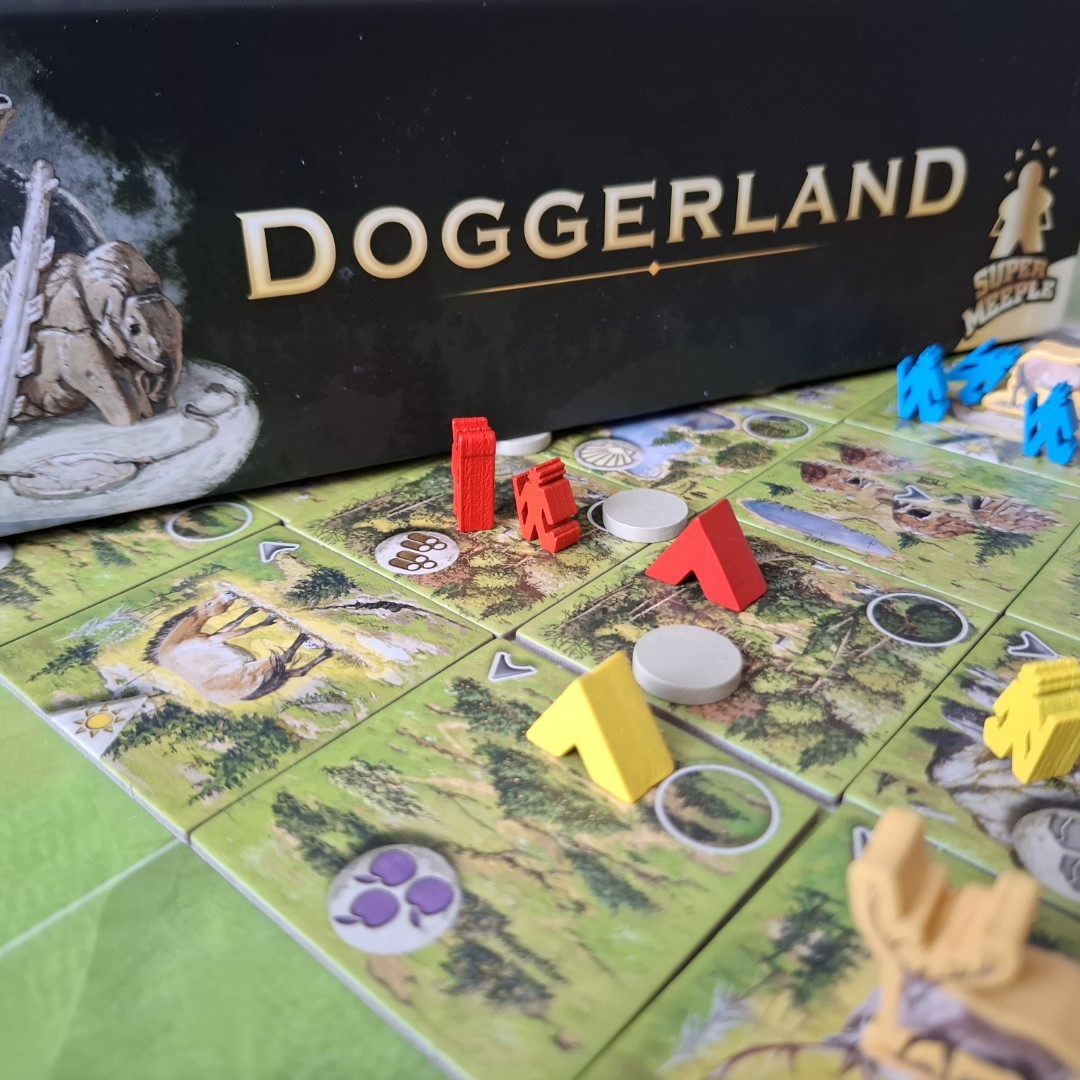
More plays, more thoughts
Having now tried the game through simultaneous resolution, and taking it in turns. I’m not sure which is worse, simultaneous resolution is definitely the quicker of the two, if you do play simultaneously for the shaman actions you’ll need to resolve these in turn order, which adds a strange element of simultaneous actions and then wait. But there won’t be a competition for hunting or resources as expeditions can’t end on a tile with an opponents pieces. So during the programming step, you’ll know who is harvesting or hunting what and where.
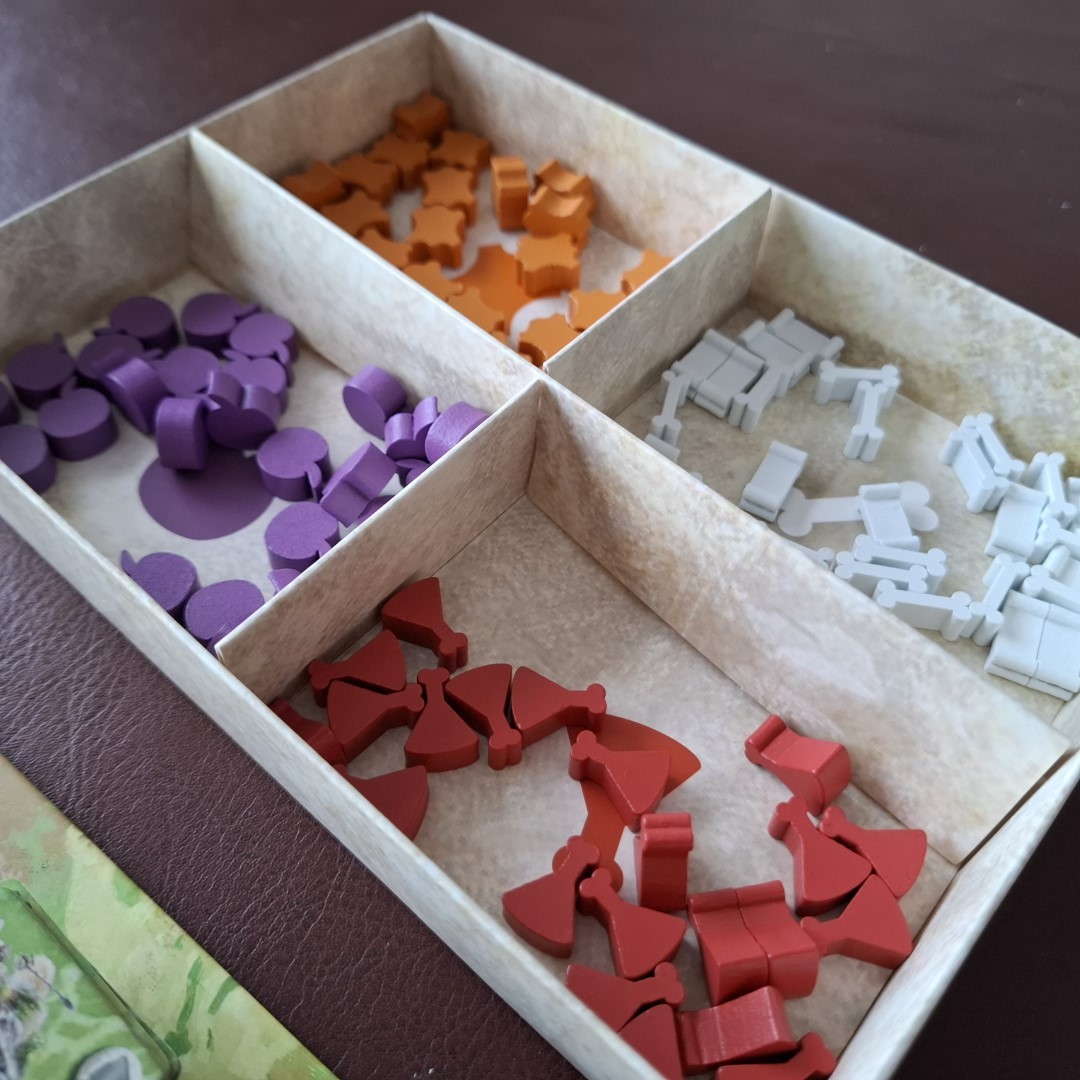
I’ve come to love the rulebook of Doggerland, the comic book throughout is brilliant and feels like a further thematic tie. And the different colour sections for solo and multilayer rules is a nice touch.
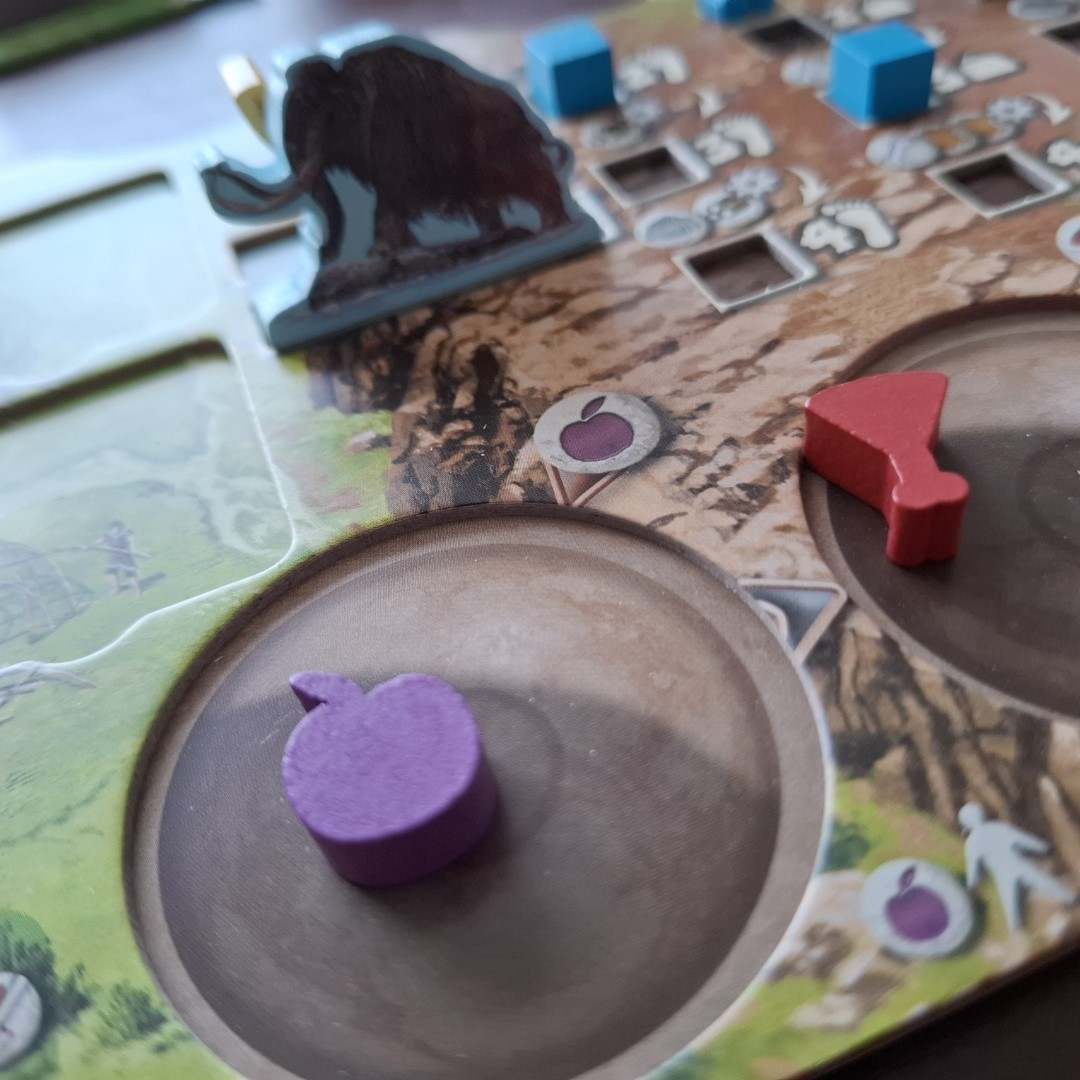
But I can’t help that Doggerland isn’t equal to the sum of its parts. Take the simultaneous action, you plan actions in turn order and then you can resolve actions simultaneously or in turn order. It feels like a worker placement game with an extra step, rather than place and resolve. It’s plan, place, plan, resolve. And I think it becomes almost glacial in its progress.
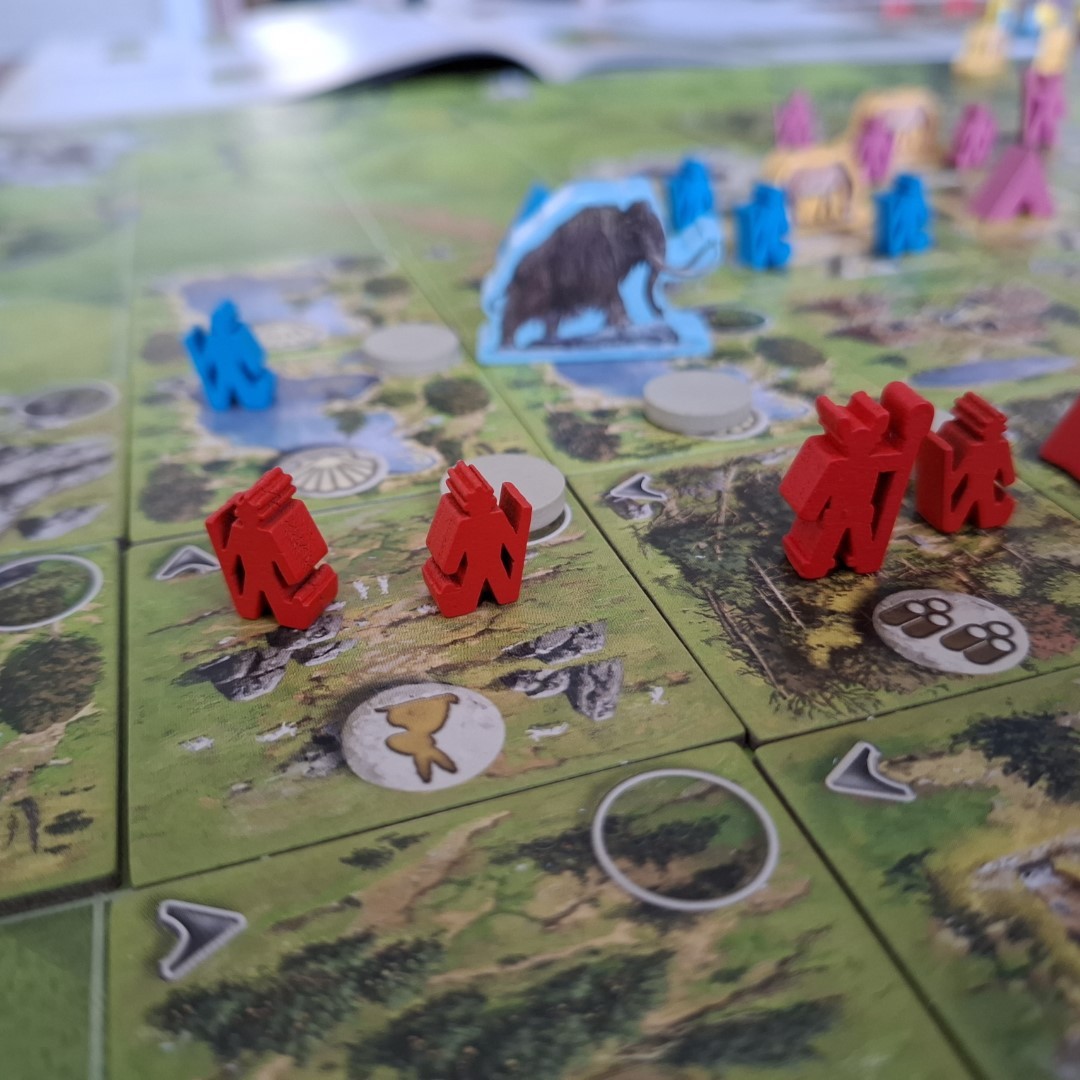
There is an interesting puzzle to be had here, the planning of different expeditions to gather or hunt. Creates a good puzzle, as your plan comes together to get the exact resources. Although feeding workers feels like a chore and a constant “oh I want this, wait got to go get food”.
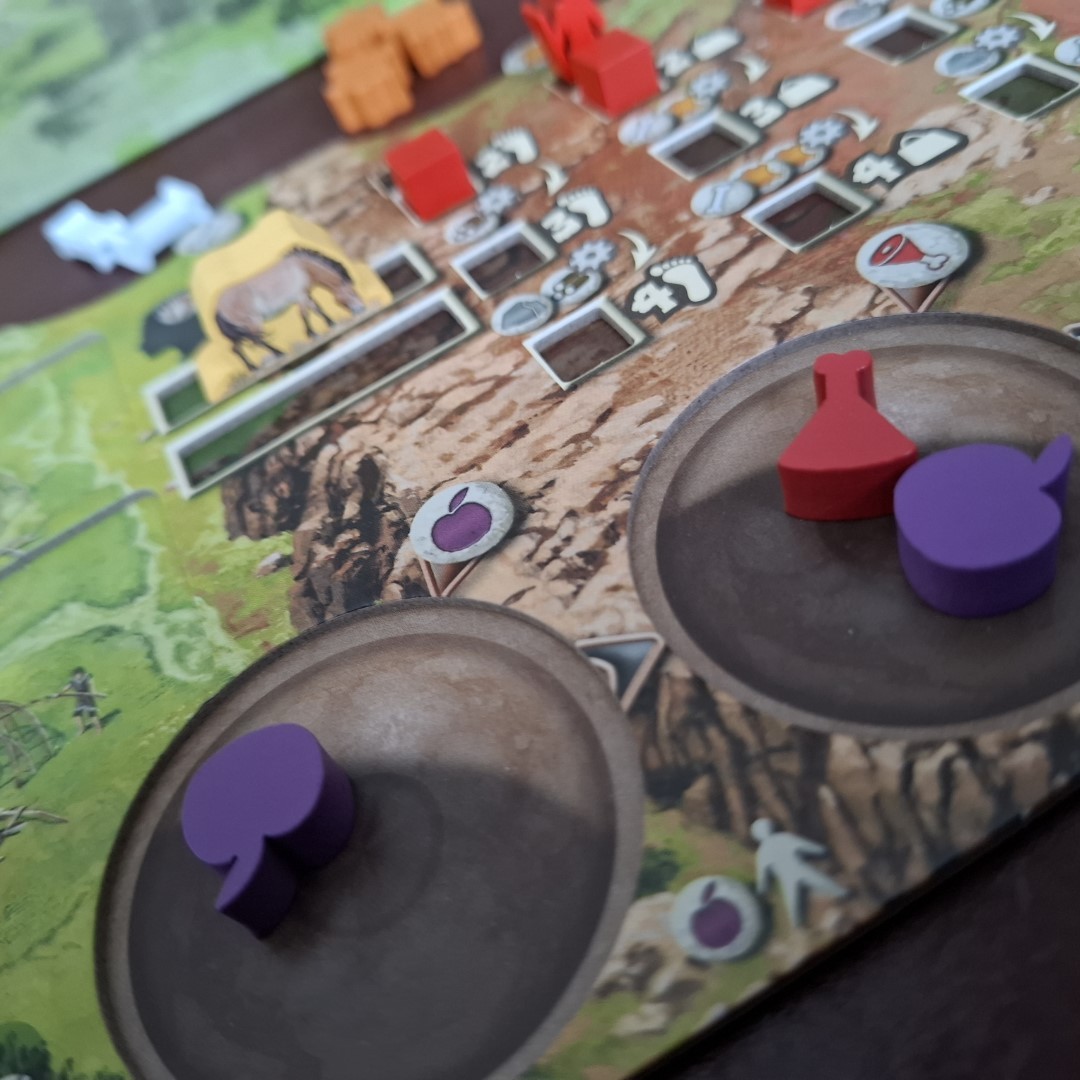
Summary
Overall, you know I rate games on a scale of:
Buy or play
Wait for sale or play if you like game XYZ
Avoid
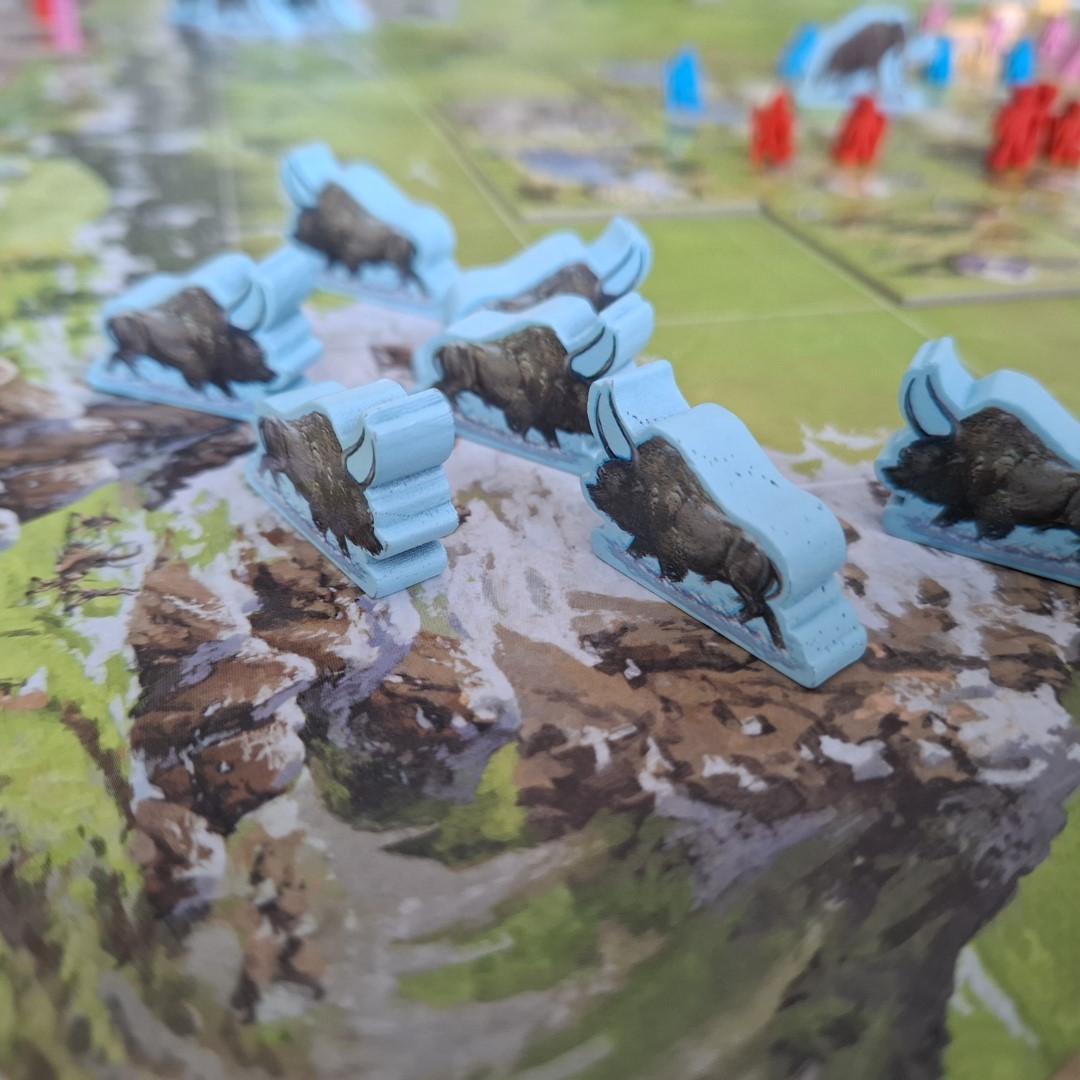
Ultimately I think Doggerland falls short of a buy or play recommendation because it feels too Glacial. Glacial in the sense of time it takes to play, not the theme. And I’m not sure all actions remain as strong throughout the game and there comes a point when it’s a race to all do the same actions, now maybe that’s like alot of other worker placement games.
But if I take my recent plays of Galactic Cruise, the first play of that took 5 hours, the 3rd just under 3 hours. But I feel like there was a reward for time investment, Doggerland didn’t leave me feeling like I’d had a rewarding game experience, rather I’d sat waiting for progression.
